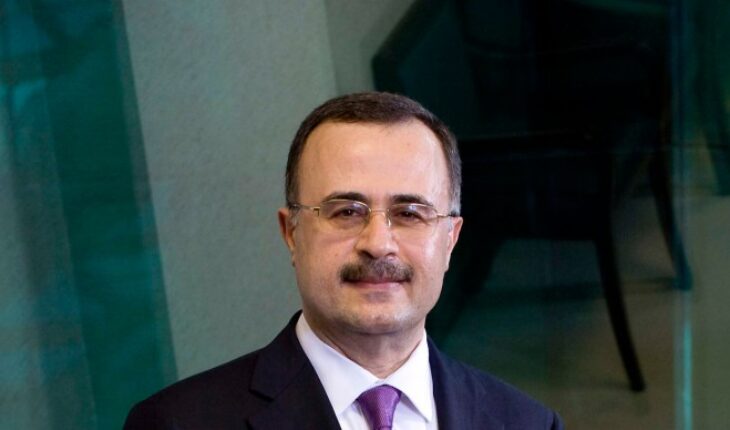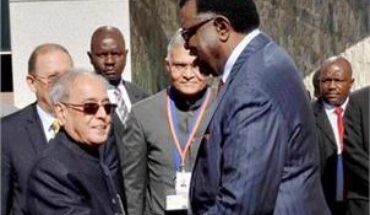Eyeing US$300-billion investment opportunities over a decade in India’s growing oil sector, the world’s biggest oil company, Saudi Aramco, has launched its subsidiary, Aramco Asia, with its office in in the northern Indian city of Gurugram.
The unit, part of the initiatives to take the relations between Saudi Arabia and India to a new level, will primarily market crude oil and liquefied petroleum gas as well as provide engineering and technical services in the country.
“I am convinced that the world’s fastest growing energy consumer and the world’s largest, lowest cost and most reliable oil supplier, must elevate their relationship to a much higher plane,” Saudi Aramco CEO Amin H Nasser said last week at an event in New Delhi.
Saudi Aramco is planning to hold talks with Indian businesses for partnerships as demand for fuel was robust in India and its petrochemicals industry was booming. “India has all the signs of a prosperous economy. I am very optimistic about our investments in India because India is a very important market. Investing in India is a priority, not a choice any more,” Nasser said at the India Energy Forum by Ceraweek.
The Saudi firm — which is looking to invest in refining, petrochemicals and fuel retailing including lubricants — is eyeing a stake in the recently set-up 60-million tonne west coast refinery jointly owned by Indian Oil Corp. Ltd, Bharat Petroleum Corp Ltd and Hindustan Petroleum Corp. Ltd (50:25:25 respectively, he said.
India’s fast expanding economy, younger population and policy aimed at driving domestic manufacturing are expected to double demand for oil and triple demand for gas by 2040, Nasser said. “Increased demand would mean security of energy supplies would become more critical, necessitating stronger partnership between India and the energy suppliers,” he added.
India, which is the third largest consumer of oil in the world, witnessed the oil demand growth of more than 8 percent compared with global growth of 1.5 percent. “We are determined to reflect our expanding and diversifying business portfolio by creating a fully integrated business here in India,” Nasser said.
Saudi Aramco’s decision to invest in India’s energy sector comes in the wake of the complete removal of subsidy and administered pricing of auto fuel since October 2014, a reform accomplished with the help of prevailing subdued oil prices.
India’s Oil Minister Dharmendra Pradhan, on his part, has said that India’s engagement with global energy companies has evolved from one of buyer-seller relationship to a strategic relationship over the last few years. “Saudi Aramco has categorically spelt out its intention to invest in India. It will help in job creation and in improving energy access,” said Pradhan.
India, which seeks to develop energy infrastructure and improve access to energy in eastern part of the country, is aiming for a cleaner, fuel-efficient economy that could benefit the poorest in the country as well, a government statement has pointed out.
Saudi Aramco’s operations in India would cover oil supply, refining, marketing, manufacturing of petrochemicals and lubes as well as collaboration in energy manufacturing and services, research and development, and technology, Nasser said.
The company, which is planning to launch US$100 billion public offer next year, also seeks to leverage Indian talent in IT, petroleum and evolving technologies, he added.
Indian companies would also soon have opportunities to invest in Saudi Arabia as the country is set to allow private participation in many industries, Nasser hinted.
The Indian government, on its part, is planning to roll out the new energy policy in the next 30-45 days, which is expected to bring in significant reforms in the sector.
After Rosneft and BP, Aramco would be the third big entry in the Indian oil markets. International players with deep pockets, better fuel sourcing capabilities and integrated operations have the capability to bring in greater economies of scale in oil production and distribution. The JVs with international players are, therefore, expected to generate better margins and thereby more cushion to play on pricing in the highly price sensitive, local media reports pointed out.
The oil industry is pinning its hopes on India and China, together home to four of every 10 people in the world, as demand elsewhere remains weak while production stays high, keeping prices low. India’s oil demand is forecast to grow 135,000 barrels a day this year and 275,000 barrels a day in 2018, according to the International Energy Agency.
India’s oil consumption surged 11 percent in 2016 to the most on record as rising income levels spurred greater use of cars, trucks and motorbikes.
“By 2040, India is likely to be among the fastest growing oil markets, with demand almost doubling to about 10 million barrels per day. Meanwhile, demand for gas is expected to more than triple over the same period,” Nasser said.






